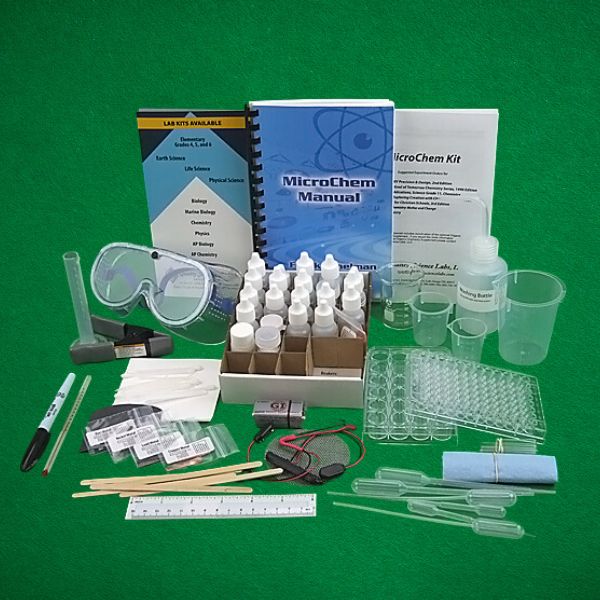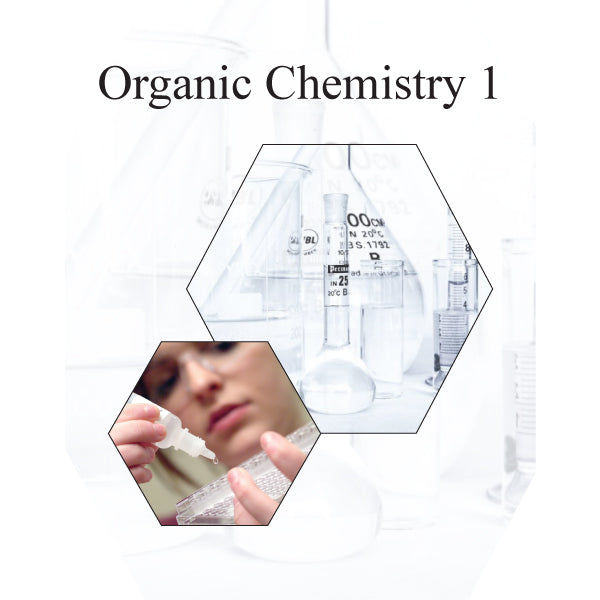Quality Science Labs, LLC offers innovative laboratory curricula and corresponding kits. Our kits can turn the kitchen into a homeschool laboratory or enhance the lab experience for schools with limited resources.
MicroChem Kit for Online Schools
Description
MicroChem Kit for Online Schools
The MicroChem Kit for Online Schools provides instruction at a college-preparatory level. It is intended as the laboratory component of a chemistry course and works well with any quality chemistry curriculum.
We have designed the MicroChem Kit for Online Schools to make learning for the students as safe as possible and convenient. This chemistry lab course is based on the Microscale method which uses about 1/100th of the chemicals a typical lab would consume. The chemical reagents are supplied in dropper bottles that are ready-to-go and do not require any mixing or further preparation. Dropping bottles facilitate the Microscale method, simplify classroom management, and help students stay organized and avoid spills, errors and inconsistencies. There are no concentrated acids or bases in the kit. The equipment provided is mostly plastic which reduces breakage.
This kit includes a 119 page manual which explains each experiment covering the following:
Goals – The goals section outlines the major learning areas of the experiment.
Background – The background would be equivalent to a short lecture on the theory of the experiment.
Materials and Equipment – Get the mentioned equipment out of the kit and you are ready to go. Any items not included in the kit like ice, sugar, hot water, etc. are mentioned in this area, as well as at the beginning of each experiment.
Procedure – Just follow the step-by-step procedure to do the experiment. Instructions are clearly explained making it easy for students, homeschool parents, and teachers/instructors.
Results – Students answer questions in the results area. This gives students a better understanding as well as a record of their completion.
The MicroChem Kit for Online Schools contains sufficient materials to perform every experiment with all that's needed except a few commonly available items. It is intended as full year of labs designed to make teaching and preparation very convenient for the instructor. Use with adult supervision. For ages 14 and up.
Lab Experiments:
1. Paper Chromatography
2. Melting Points, Super Cooling
3. Electrical Conductivity of Several Solutions
4. Mole Ratios
5. Double Replacement Reactions
6. Oxidation-Reduction
7. Decomposition
8. Boyle's Law
9. Charles's Law
10. Solubility Product Constant
11. PH and PH Indicators
12. A Microscale Titration
13. Molar Mass by Titration
14. A Buffer Solution
15. Reaction Rates: The Effect of Concentration
16. Reaction Rates: The Effect of Temperature
17. Electrochemistry: Galvanic Cells
Contents of the kit-
Manual
Battery, 9-volt
Beaker, glass, 50 mL
Beakers, plastic: 15, 30, 150 mL
Capillary tubes
Chromatography paper
Conductivity apparatus
Cotton swabs
Electrolysis device
Graduated cylinder, 10 mL, plastic
Graph paper (pages 11-12, 16, 20, 24, 40, 45-46, 50, 54, 68, 78, 82, 87-88)
Measuring spoon, 1.0 mL
Pen, black, felt-tip, water-soluble ink
Pipets, graduated, mini, and thin
Reaction plate, 24-well
Reaction plate, 96-well
Rubber bands
Ruler, 15 cm
Safety goggles
Sandpaper, fine
Spring clamp
Test tubes: 6 X 50 mm, 12 X 75 mm
Thermometer, -10° to 102° C
Toothpicks, plastic
Washing bottle
Wire
Wire gauze
Wood splints
Copper
Iron
Nickel
Zinc
Acetic acid, 0.1 M
Bromophenol blue indicator
Calcium nitrate, 0.1 M
Copper nitrate. 0.1 M
Distilled water
Glycerin
Hydrochloric acid, 0.1 M
Iron nitrate, 0.1 M
Nickel nitrate, 0.1 M
Phenolphthalein indicator paper
Potassium hydroxide, 0.1 M
Potassium iodide, 0.1 M
Sodium acetate, 0.1 M
Sodium hydroxide, 0.1 M
Sodium oxalate, 0.1 M
Sodium sulfate, 0.1 M
Sodium thiosulfate, 0.1 M
Universal indicator paper
Zinc nitrate, 0.1 M
Magnesium sulfate
Potassium hydrogen phthalate
Cetyl alcohol
Palmitic acid
Related Products
Advanced MicroChem Kit
- $299.30
MicroChem Kit Standard Edition
- $196.63
BCC 1814 Organic Chemistry 1
- $249.63






